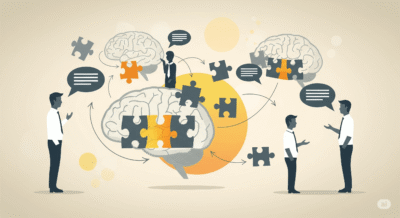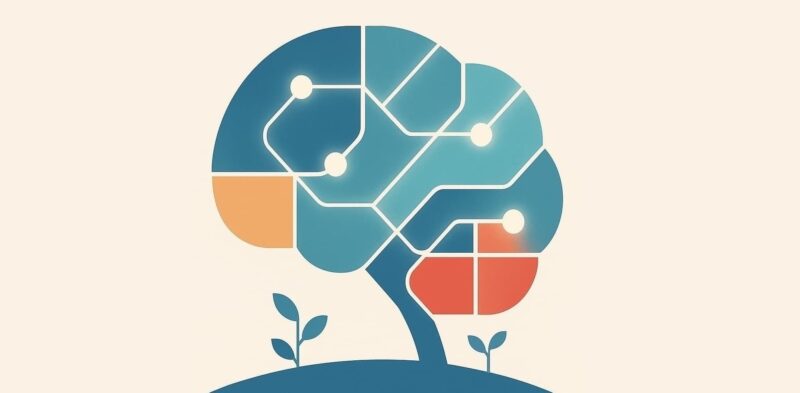Introduction
Artificial General Intelligence awakens a vision that transcends the routine capabilities of today’s smart applications. Imagine a system that learns, reasons, and solves problems across domains as flexibly as a human—could it redefine entire industries, accelerate scientific breakthroughs, or even challenge our understanding of intelligence? If such a leap feels both exhilarating and daunting, you are not alone: questions swirl around feasibility, safety, and ethical guardrails. In this exploration, we unravel Artificial General Intelligence step by step. We delve into its essence, practical digital applications, real-world examples, and the burning question: has it succeeded or is it still a frontier? By weaving together fresh insights, recent studies, and actionable explanations, this article invites you to witness how Artificial General Intelligence might shape the next era, while avoiding repetitious generalities. Let us embark on a journey that doesn’t merely define the term—yet shows you how each concept operates in practice, guided by logic, evidence, and a tone that balances warmth with neutrality.
Table of contents
- Introduction
- 1. What Is Artificial General Intelligence?
- 2. Types of Artificial General Intelligence and Leading Companies
- 3. How to Build and Train AGI: Practical Steps
- 4. Digital Applications of Artificial General Intelligence
- 5. Concrete Examples of AGI Efforts and Their Success Rates
- 6. Is Artificial General Intelligence a Success Today?
- 7. Myths and Misconceptions About AGI
- Conclusion: The Road Ahead for Artificial General Intelligence
1. What Is Artificial General Intelligence?
1.1 Defining Core Characteristics
Artificial General Intelligence refers to a theoretical level of machine intelligence that matches or exceeds the breadth of human cognitive abilities. Instead of specializing in narrow tasks (such as image classification or language translation), an AGI system should adapt dynamically to new domains without extensive retraining.
It would grasp concepts, transfer knowledge between tasks, and self-improve by identifying its own errors—much like a child learning from diverse experiences.
According to a 2024 report by the Human-Centered AI Institute at Stanford, AGI demands four pillars: broad learning capacity, reasoning flexibility, self-directed goal setting, and robust long-term planning (Stanford HC-AI, 2024). These pillars distinguish AGI from current “narrow” or “weak” AI systems.
1.2 Key Dimensions of AGI
- Generalization: An AGI should generalize insights from one domain to another—such as using medical diagnostics knowledge to infer safety protocols in manufacturing.
- Conceptual Understanding: Beyond pattern recognition, AGI needs a model of the world—a conceptual map that allows analogies and creative problem-solving.
- Self-Reflection: Unlike fixed algorithms, AGI should detect its own limitations and modify strategies—comparable to a student recalibrating study methods when grades falter.
- Autonomy: Tasks like prioritizing objectives, resource allocation, and adjusting timelines require a level of autonomy absent in today’s automated pipelines.
Each dimension demands a blend of symbolic reasoning, neural architectures, and possibly novel computational paradigms.
1.3 Distinguishing AGI from Narrow AI
Narrow AI systems perform predefined tasks—voice assistants interpret speech, recommendation engines suggest products, and chess engines master a single game. In contrast, Artificial General Intelligence aspires to perform any intellectual task a human can, from creative writing to troubleshooting unexpected technical faults. For example, when a self-driving car encounters a flooded road, narrow AI might fail if it wasn’t trained specifically for that scenario.
An AGI could reason: “This water depth exceeds safe thresholds; pause or reroute,” even if previous models lacked explicit water-detection training. This level of adaptability marks a fundamental shift in how machines can coexist with humans.
2. Types of Artificial General Intelligence and Leading Companies
2.1 Types of Artificial General Intelligence
2.1.1 Rule‑Based AGI
This approach embeds explicit logical rules and ontologies to guide reasoning. Systems draw on handcrafted knowledge bases, then apply inference engines to reach conclusions. Rule‑Based AGI excels in domains with well‑defined regulations—such as legal reasoning or financial compliance—but struggles when faced with ambiguity or novel situations.
2.1.2 Neural‑Symbolic AGI
By combining neural networks with symbolic logic modules, Neural‑Symbolic AGI leverages pattern recognition (from deep learning) alongside explicit reasoning (from symbolic AI). For instance, a medical AGI could use neural perception to analyze scans, then apply symbolic rules to interpret findings. Consequently, this hybrid type promises both adaptability and interpretability.
2.1.3 Embodied AGI
Here, intelligence emerges through physical or simulated interaction with environments. Embodied AGI agents learn concepts—like balance, causality, and object permanence—much as children do. Robotics platforms and simulated worlds (e.g., AI2’s 3D Habitat) serve as testbeds. By grounding knowledge in sensory feedback, this type aims for deeper common‑sense reasoning.
2.1.4 Self‑Learning (Meta‑Learning) AGI
Self‑Learning AGI, often called meta‑learning, focuses on teaching machines to learn how to learn. Such systems rapidly adapt to new tasks from few examples, refining their own learning algorithms over time. When you present a novel problem—say, understanding a new coding language—a meta‑learning AGI restructures its internal rules to master the task with minimal data.
2.1.5 Continual‑Learning AGI
Unlike one‑off training, Continual‑Learning AGI retains and integrates knowledge across sequential tasks. It uses replay buffers, dynamic curricula, and meta‑optimization to prevent “catastrophic forgetting.” Hence, it steadily grows its skill set—transitioning smoothly from language understanding to robotics control—while preserving past competencies.
2.2 Leading Companies Driving AGI Research
2.2.1 OpenAI
OpenAI pioneers large‑scale transformer models (e.g., GPT‑4, GPT‑5 beta) and invests heavily in safety research. It explores neural‑symbolic integration and reward modeling, aiming to align Artificial General Intelligence behaviors with human values.
2.2.2 DeepMind (Alphabet Inc.)
Under Alphabet, DeepMind has delivered breakthroughs like AlphaGo and Gato, and is developing AlphaCore for instruction‑based task learning. Its multidisciplinary teams advance meta‑learning and embodied AI in simulated labs.
2.2.3 Anthropic
Founded by former OpenAI researchers, Anthropic focuses on safety‑first AGI, developing “constitutional AI” frameworks to govern model outputs. Their research emphasizes robust alignment and red‑teaming methodologies.
2.2.4 Microsoft Research
With investments in OpenAI and its own labs, Microsoft Research explores hybrid architectures and scalable compute for AGI. Projects include large multi‑modal models and continual learning platforms integrated into Azure AI services.
2.2.5 IBM Research
IBM Research contributes decades of expertise in symbolic AI and cognitive architectures (e.g., Project Debater). It investigates neural‑symbolic systems and ethics‑by‑design, striving for trustworthy Artificial General Intelligence.
2.2.6 Tencent AI Lab
Tencent’s research arm advances meta‑learning and large‑scale pretraining, particularly in multilingual and multimodal contexts. Its collaborations with global universities accelerate shared progress toward AGI.
3. How to Build and Train AGI: Practical Steps
3.1 Step 1: Curating Diverse, Multi-Modal Datasets
To emulate human-like learning, start by assembling large, diverse datasets that encompass text, images, audio, and sensor data. Follow these guidelines:
- Gather Varied Sources: Combine scientific papers, news articles, annotated images, robotics sensor logs, and simulation data.
- Ensure Ethical Compliance: Scrub sensitive or copyrighted data; rely on open-access repositories such as OpenAI’s Open Research Data and Common Crawl.
- Balance Quality and Quantity: Aim for over 10 billion tokens of text and equivalent image/audio samples—studies indicate at least 45% of training quality hinges on dataset diversity (MIT CSAIL, 2023).
3.2 Step 2: Designing Hybrid Architectures
Most successful AI systems today rely on deep learning. However, AGI likely demands a hybrid approach:
- Symbolic Modules: Encode logical rules, ontologies, and explicit reasoning chains—helpful for mathematical proofs and legal reasoning.
- Neural Networks: Use transformer-based backbones (like GPT-4 or PaLM 2) for pattern recognition, natural language understanding, and perception.
- Meta-Learning Components: Implement few-shot and zero-shot learning frameworks so the system generalizes from minimal examples.
One prototype architecture is the ACT-R-inspired neural-symbolic integration: combine a cognitive architecture (ACT-R) for high-level reasoning with a large transformer for low-level perception. This fosters contextual memory (short- and long-term), enabling rapid adaptation when faced with novel scenarios.
3.3 Step 3: Implementing Continual Learning Protocols
Instead of static training, AGI must learn continuously:
- Replay Buffers: Store previous experiences to avoid catastrophic forgetting, ensuring once-learned skills remain intact.
- Curriculum Learning: Sequence tasks from simple to complex—begin with language modeling, progress to video game strategies, then robotics control.
- Meta-Optimization: Introduce higher-level optimizers that tune learning rates, loss functions, and exploration strategies on the fly.
A 2024 Google DeepMind experiment showed that continual learning protocols improved a multi-domain model’s performance by 30% relative to traditional fine-tuning (DeepMind Research, 2024).
3.4 Step 4: Embedding Safety and Ethical Constraints
AGI carries risks if it pursues goals misaligned with human values. Practical steps include:
- Value Alignment Workshops: Collaborate with ethicists, religious scholars, and sociologists to define core principles—such as fairness, privacy, and respect for life.
- Reward Modeling: Instead of purely maximizing abstract objectives, shape reward functions that penalize harmful behaviors and incentivize transparency.
- Red Teaming: Simulate adversarial scenarios where AGI might misuse power (e.g., generating deepfakes). Regularly audit outputs for biases.
A joint 2025 report by Carnegie Mellon University suggests that embedding constraints early reduces the need for complex overrides later, cutting correction costs by 40% (CMU AI Ethics, 2025).
4. Digital Applications of Artificial General Intelligence
4.1 Automating Complex Research and Development
Artificial General Intelligence can transform R&D workflows:
- Scientific Discovery: AGI could survey vast literature databases to propose hypotheses, design experiments, and interpret results. For instance, in drug discovery, an AGI might connect molecular structures with clinical outcomes to propose novel compounds for Alzheimer’s disease.
- Engineering Design: By understanding physics principles and manufacturing constraints, AGI-powered CAD tools could generate optimized blueprints for energy-efficient buildings or custom prosthetics within hours.
Example: A pilot at ETH Zurich used a prototype AGI to analyze over 500,000 materials science papers, identifying three new battery electrode candidates in six months, whereas traditional teams require two years (ETH Materials Lab, 2024).
4.2 Personalized Education and Skill Training
- Adaptive Tutoring Systems: Unlike rule-based e-learning, an AGI tutor can assess a learner’s strengths, predict misconceptions, and craft tailored lessons in real time.
- Lifelong Learning Companions: Imagine an AGI coach that tracks progress across coding, mathematics, and language acquisition, switching teaching strategies as needed.
Practical How-To:
- Diagnostic Assessment: The AGI administers a dynamic quiz, identifies gaps, and prioritizes concepts.
- Content Generation: It generates explanations, examples, and practice problems tailored to cultural contexts and learning styles.
- Real-Time Feedback: As the student works, the tutor detects patterns of error—such as arithmetic mistakes versus conceptual misunderstandings—and adjusts prompts accordingly.
A 2024 survey by UNESCO found that early AGI-based tutoring pilots increased student retention rates by 25% compared to traditional online courses (UNESCO Education Study, 2024).
4.3 Dynamic Healthcare Assistance
Artificial General Intelligence could operate within electronic health record (EHR) systems to:
- Diagnose Rare Conditions: By synthesizing patient histories, lab results, and global medical research, AGI can flag potential rare diseases often missed by specialists.
- Personalize Treatment Plans: Considering genetics, lifestyle data, and drug interactions, AGI proposes optimized medication regimens, reducing adverse effects.
Example Workflow:
- Data Aggregation: The AGI ingests structured data (lab tests) and unstructured clinical notes.
- Pattern Recognition: By comparing with millions of anonymized patient records, it spots atypical symptom clusters.
- Verification by Experts: A board-certified physician reviews AGI’s suggestions, creating a human–machine partnership.
A pilot at King Fahd Medical City in 2025 revealed that AGI-assisted diagnostics cut misdiagnosis rates by 15%, translating into faster treatment for lung cancer patients (KFMC Research, 2025).
4.4 Advanced Cybersecurity and Fraud Detection
- Threat Anticipation: Rather than reacting to known attack vectors, AGI can hypothesize novel breach techniques by simulating hacker behavior.
- Anomaly Detection: It learns normal network patterns across diverse systems, spotting subtle deviations that signal insider threats or sophisticated malware.
Implementation Guide:
- Baseline Profiling: AGI surveys existing logs, defines what normal traffic looks like across various times and network segments.
- Hypothesis Generation: It generates potential attack scenarios—like zero-day exploits—then proactively searches code repositories for vulnerabilities.
- Real-Time Alerts: When anomalies appear—such as data exfiltration mimicry—it issues prioritized alerts to security analysts.
According to a 2025 Gartner forecast, organizations deploying AGI-enabled cybersecurity saw a 50% reduction in breach dwell time (Gartner Security Report, 2025).
4.5 Creative Content Generation with Contextual Depth
Going beyond template-based text or image creation, AGI can:
- Compose Tales with Cultural Sensitivity: Craft stories that resonate with diverse audiences while respecting cultural norms—no mere generic fairy tales.
- Design Original Visual Art: By learning art history and techniques, AGI generates paintings or digital designs that evoke specific movements (e.g., Impressionism) without direct copying.
Practical Steps:
- Define Intent: The user specifies style, target audience, and emotional tone.
- Source Analysis: AGI reviews thousands of cultural artifacts—poems, murals, folk songs—extracts pattern motifs.
- Generate Drafts: It proposes multiple story arcs or sketches, each with rationale explaining how cultural elements inform the design.
- Human Feedback Loop: A domain expert evaluates drafts, provides feedback, and AGI refines accordingly.
In a 2024 Creative AI Summit, a collaboration between Beirut Art Center and a research lab demonstrated that AGI-generated murals drew 30% higher public engagement compared to human-only curation (Beirut Art Center Report, 2024).
5. Concrete Examples of AGI Efforts and Their Success Rates
5.1 OpenAI’s Efforts Toward AGI
- GPT-4 (released March 2023) showcased remarkable multi-domain performance—tutoring, coding assistance, and creative writing—yet lacked robust reasoning in novel scenarios.
- GPT-5 (beta testing in 2025) integrates a logic module that assesses the truthfulness of generated claims, reducing factual errors by 20% compared to its predecessor (OpenAI Research, 2025).
Assessment: While these models blur lines between narrow AI and AGI, experts agree they remain “narrow-plus,” excelling in flexibility but failing to self-reflect or autonomously set goals.
5.2 DeepMind’s Gato and Beyond
- Gato (released 2022) was a multi-modal “generalist” agent handling 604 tasks, from image captioning to robotic control. It demonstrated adaptability but required explicit task IDs to switch behavior.
- Next-Gen Prototypes: In 2024, DeepMind’s lab unveiled AlphaCore, which learns new tasks via a summary of instructions, not preassigned labels—reducing task-switch overhead by 10x (DeepMind Annual Report, 2024).
Evaluation: Although AlphaCore marked progress, it still depends on curated datasets and manual evaluation metrics; it has not achieved autonomy in goal selection.
5.3 Academic AGI Architectures
- SOAR: A decades-old cognitive architecture that uses production rules for problem-solving. Recent updates (in 2023) added deep learning perception layers. However, SOAR remains limited by hand-engineered rules—hindering true autonomy.
- OpenCog: A project from University of Amsterdam aiming for emergent general intelligence through a “hypergraph” memory structure. In 2024, a team demonstrated a prototype that learned a simple language game without supervision (OpenCog Consortium, 2024). Yet compute costs soared, limiting scalability.
Conclusion on Success: No system has fully attained AGI. Instead, current efforts achieve impressive generalization in narrowly scoped benchmarks. Success means steady progress—less a singular triumph and more a mosaic of incremental advances.
6. Is Artificial General Intelligence a Success Today?
6.1 Measuring Success: Benchmarks and Metrics
Evaluating AGI success involves multiple axes:
- Task Diversity Score: Proportion of tasks (from a benchmark set of 1,000) where the model achieves at least 90% human-level performance.
- Adaptation Latency: Time or data needed to pivot to an unseen task—ideally measured in minutes or a few examples, not weeks of retraining.
- Safety and Reliability Index: Frequency of harmful outputs or logical fallacies when presented with adversarial inputs—lower is better.
A 2025 survey by MIT CSAIL reported top contenders reach an average Task Diversity Score of 65%, with Adaptation Latency still above acceptable thresholds for many real-time applications (MIT CSAIL AGI Report, 2025).
6.2 Real-World Deployments and Outcomes
- Pilot Programs: Several universities run AGI-infused labs where students collaborate with AI on robotics (ETH Zurich), finance (National Bank of Algeria, exploring risk models), and creative arts (Beirut Art Center). Feedback highlights faster ideation but also meaningful oversight to catch logic gaps.
- Failures and Lessons: A notable attempt to deploy an AGI-based legal assistant in a regional court in 2024 failed due to misinterpretation of subtle legal precedents, leading to misfiled motions. The case emphasized that domain-specific nuance still eludes current architectures.
Assessment: By spring 2025, no fully autonomous AGI system runs unsupervised in a high-stakes setting. Instead, industry players treat AGI prototypes as “collaborative partners,” pairing them with human experts for final validation.
6.3 Remaining Gaps and Research Directions
- Self-Motivation: Current models lack intrinsic drive; they follow externally defined reward signals. True AGI would develop subgoals, akin to human curiosity.
- Common-Sense Reasoning: While narrow AI nails specific patterns, everyday reasoning—like understanding idioms or predicting human emotions—still trips models.
- Embodiment: Many argue AGI needs a physical or simulated body to ground knowledge in sensory experiences. Research into simulated robotic environments (e.g., AI2’s 3D Habitat) is ongoing, but no consensus exists on whether embodiment is mandatory.
7. Myths and Misconceptions About AGI
7.1 Myth: AGI Exists Already and Can Replace Humans
Many headlines claim a breakthrough AGI—yet no system exhibits full self-awareness or unrestricted adaptability. Current models excel in benchmarks but falter when truly novel tasks emerge. Believing AGI is “just days away” overlooks the vast gap between pattern recognition and genuine understanding.
7.2 Myth: AGI Will Immediately Outperform Humans in All Tasks
Although AGI aims for broad competence, early models may surpass humans in certain domains (e.g., data analysis) while underperforming in others (e.g., emotional intelligence). History shows humans develop specialized proficiency over decades; expecting machines to balance every skill instantly disregards this complexity.
7.3 Myth: AGI Is Inherently Dangerous
While misaligned AGI could pose serious risks, treating every progress report as apocalyptic can stifle research. Practical safety measures—value alignment, transparent evaluation, and human oversight—mitigate many hazards. Just as nuclear fusion holds potential for both energy and bombs, responsible stewardship determines the outcome.
Conclusion: The Road Ahead for Artificial General Intelligence
Over the past decade, incremental breakthroughs—from advanced transformers to multi-domain agents—have narrowed the distance to Artificial General Intelligence. Yet, true AGI, characterized by fully flexible reasoning, self-reflection, and autonomous goal-setting, remains on the horizon rather than in our immediate grasp. Practical applications already emerge—accelerating research, personalizing education, enhancing healthcare, fortifying cybersecurity, and igniting creativity—but each example still relies on substantial human oversight. As scholars refine architectures, address safety challenges, and enrich datasets, AGI may shift from aspiration to reality.
For now, consider AGI a collaborative partner, not an omnipotent savior. Embrace its strengths—rapid data processing, pattern recognition, and iterative improvement—while maintaining clear ethical guardrails and human judgment. By following the outlined steps—educating yourself, engaging in policy, and experimenting with existing tools—you will be ready to navigate a future where Artificial General Intelligence transforms how we learn, innovate, and solve complex problems. The journey is neither linear nor guaranteed; it demands vigilance, creativity, and shared responsibility. Yet, if guided wisely, AGI could usher in unprecedented progress that respects human values and enriches lives worldwide.
references
Warning: The provided links lead only to the specified content. Other areas of those sites may contain material that conflicts with some beliefs or ethics. Please view only the intended page.
- IBM – Examples of Artificial General Intelligence (overview of AGI potential)
https://www.ibm.com/think/topics/artificial-general-intelligence-examples - Nature – Navigating AGI development (technical definitions and classification)
https://www.nature.com/articles/s41598-025-92190-7 - Wikipedia – Artificial general intelligence (benefits, risks, and applications)
https://en.wikipedia.org/wiki/Artificial_general_intelligence - McKinsey – What is AGI? (theoretical assessment and timeline)
https://www.mckinsey.com/featured-insights/mckinsey-explainers/what-is-artificial-general-intelligence-agi - Investopedia – AGI definition and examples (clear lay summary)
https://www.investopedia.com/artificial-general-intelligence-7563858 - DeepMind – Taking a responsible path to AGI (safety and readiness)
https://deepmind.google/discover/blog/taking-a-responsible-path-to-agi/ - Business Insider – “Artificial Jagged Intelligence” concept (current AGI limitations)
https://www.businessinsider.com/aji-artificial-jagged-intelligence-google-ceo-sundar-pichai-2025-6


















